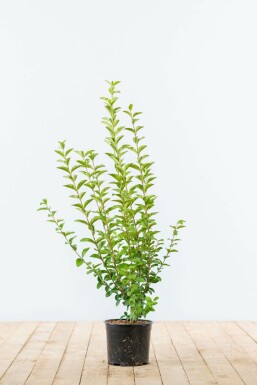
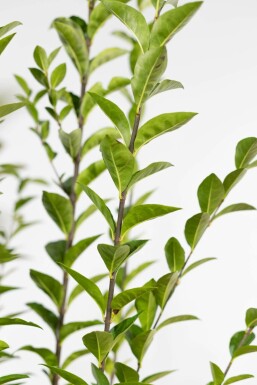




Updated on 10 September 2025
We regret to inform you that we are currently unable to ship orders to the United Kingdom. We anticipate being able to resume shipments at the beginning of 2026.
Ligustrum offers year-round greenery with its evergreen varieties, making it an excellent choice for hedges or topiary. Its dense foliage and white spring blossoms create structure and beauty. Perfect for urban gardens and attracting birds, it's easy to prune and maintain.







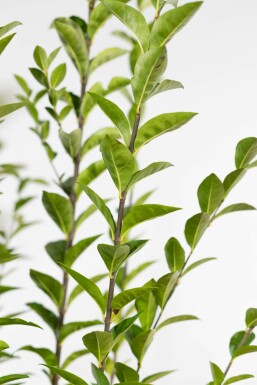




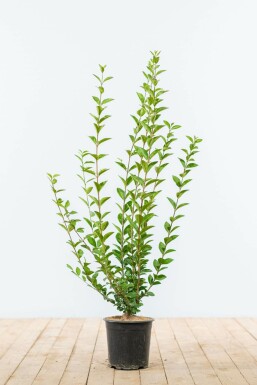
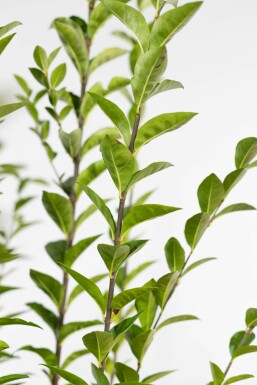




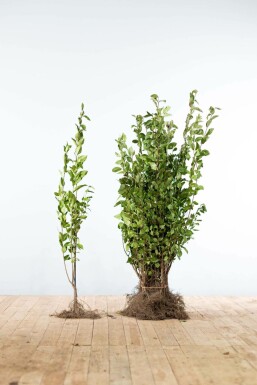
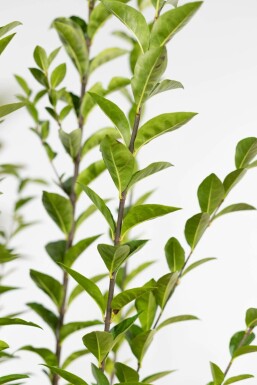




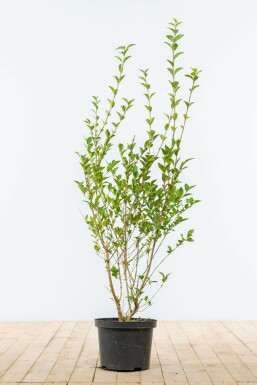
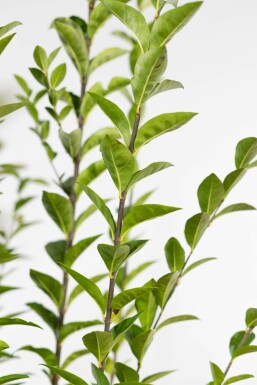




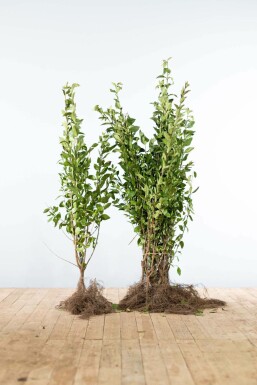
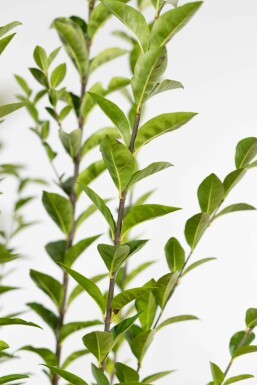




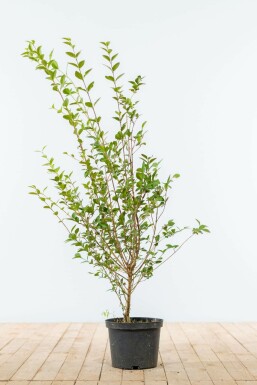
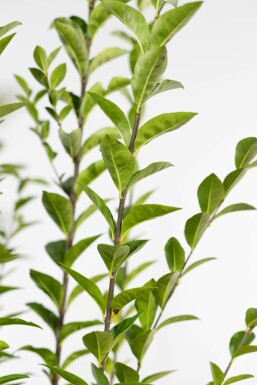




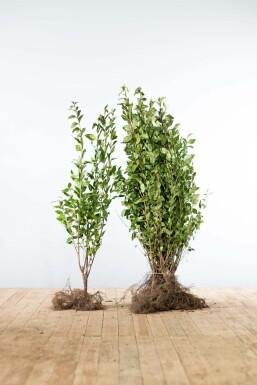
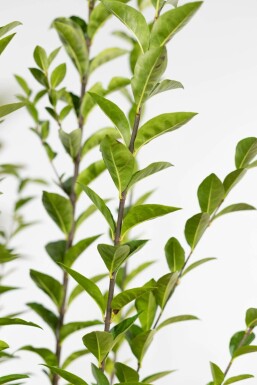




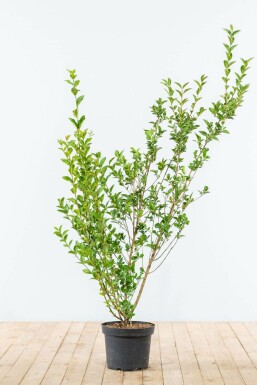
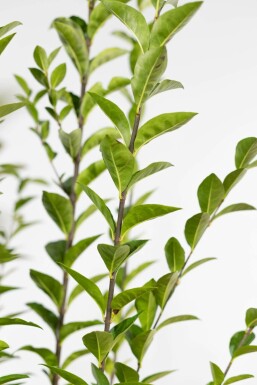




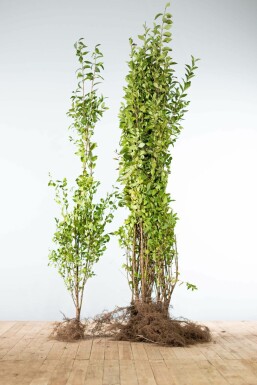
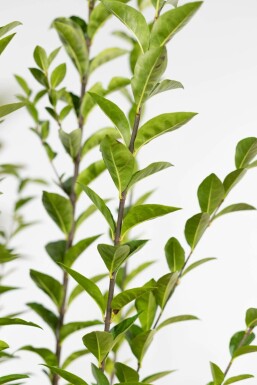




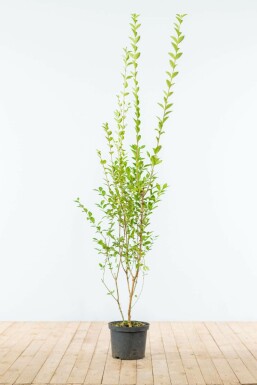
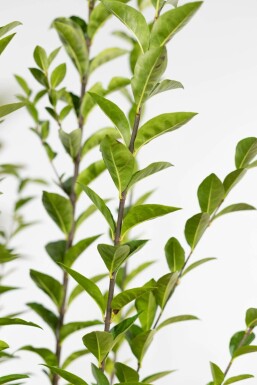




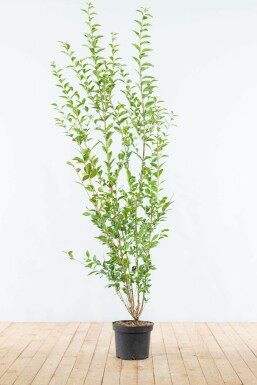
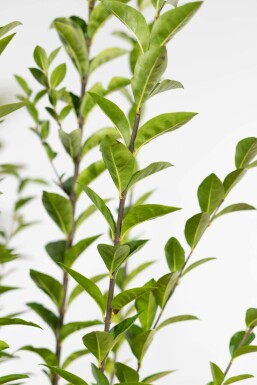





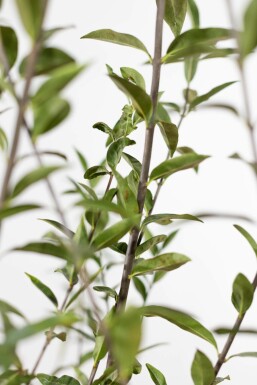




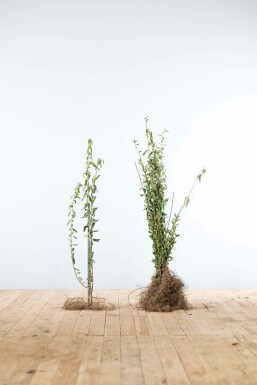
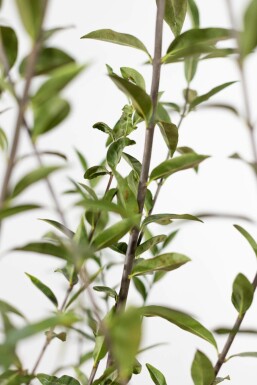




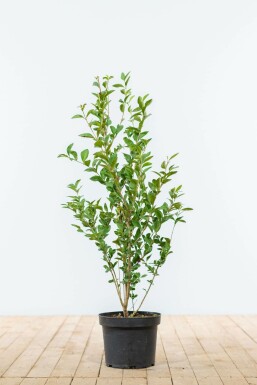
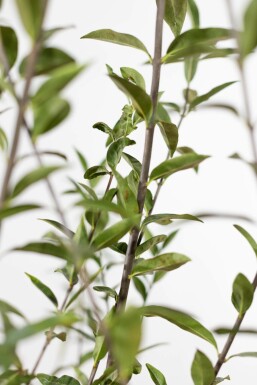




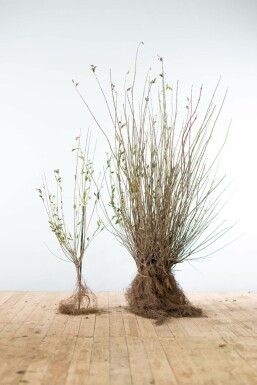
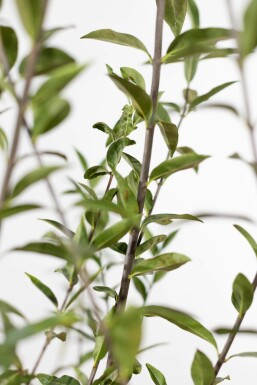




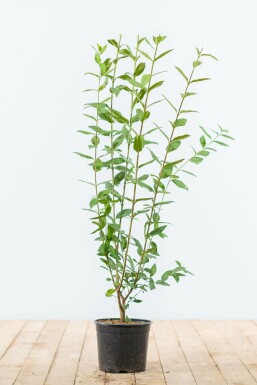





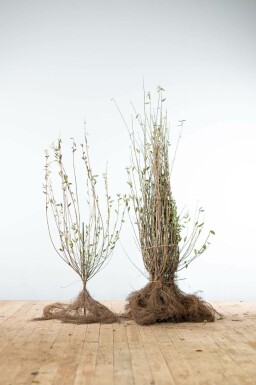
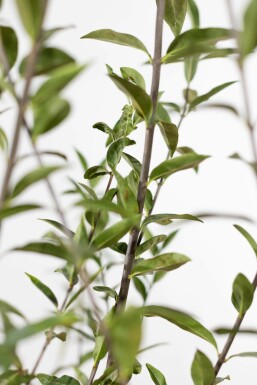




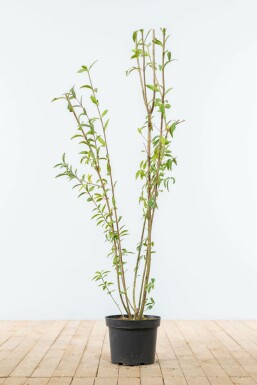
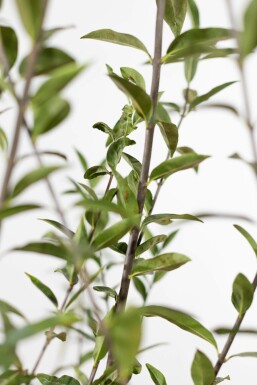




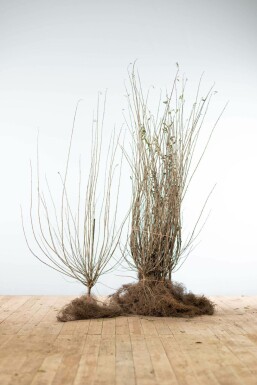
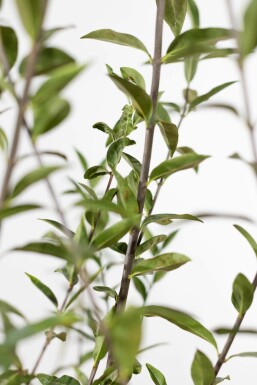




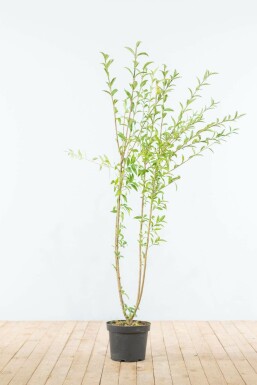
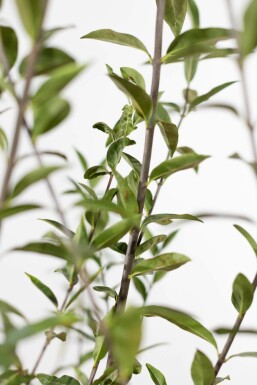




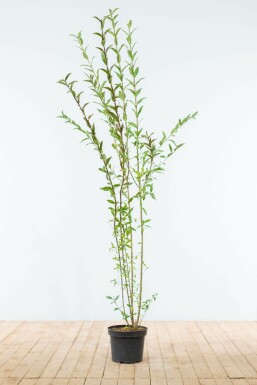
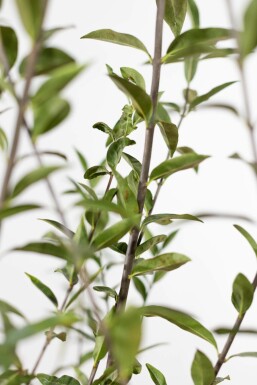




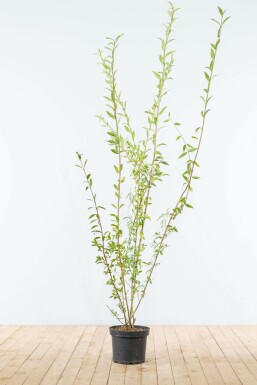
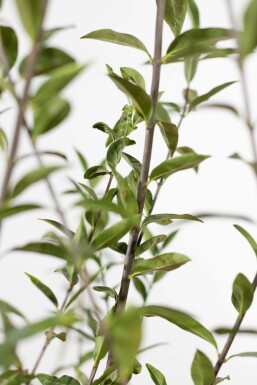




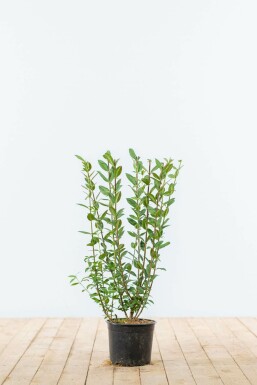





Ligustrum is a popular choice for creating evergreen hedges in gardens. With its oval glossy leaves and fragrant white flowers, it provides both beauty and functionality. The shrub or small tree blooms from late spring to summer, showcasing plume-shaped flowers that attract birds and add charm to the landscape. For those seeking privacy, a Ligustrum hedge is perfect for screening. Its smooth grayish bark and black toxic berries offer additional interest. Easy to prune, it is ideal for forming topiary structures. Whether adding a boundary planting or inviting wildlife, Ligustrum remains a timeless favourite. Consider purchasing Ligustrum hedging in the UK to enhance the garden's aesthetics and purpose.
Ligustrum, also known as privet, is a popular plant used for hedging. This genus belongs to the Oleaceae family and includes species like the Ligustrum hedge, Evergreen screen, and Traditional hedging. These shrubs are well-known for their ability to create a dense, green barrier, making them ideal for privacy and noise reduction in gardens. Synonyms for Ligustrum include privet and evergreen hedge. In the garden, Ligustrum is versatile, serving as a shrub, specimen plant, or topiary. It's commonly planted in pots or planters and can flourish in natural gardens. The plant is native to Europe, Asia, and North Africa, but it's also widely used in gardens worldwide for its pollution tolerance and adaptability to urban climates. Ligustrum plays a crucial ecological role. Its winter berries are a food source for birds, while its flowers attract bees. The plant grows quickly and can be evergreen or deciduous. It thrives with regular pruning and does well in shade. The word 'privet' comes from Latin 'ligare', meaning 'to bind', signifying its use in forming boundaries. Historically, it's been used in monastery gardens as a symbol of order and protection. If looking to enhance garden spaces, consider buying Ligustrum hedging in the UK for an evergreen screen.
The Ligustrum is a widely used hedge plant that grows quickly and is easy to prune. It is a fast-growing shrub or small tree, often forming dense hedges. The plant has oval, glossy leaves that provide an evergreen look, maintaining its foliage throughout the year. In urban climates, this plant adapts well, tolerating both pollution and shade. The Ligustrum can reach heights between 1 to 5 metres, depending on the species and growing conditions. In late spring to early summer, the Ligustrum blooms with white to cream plume-shaped flowers. These flowers, sometimes pleasantly fragrant, attract pollinators but can also produce a less appealing scent. After flowering, the plant develops small black berries. Although these berries are toxic, they contribute to the plant's ornamental value. The Ligustrum thrives in well-drained soil and benefits from regular pruning to maintain its shape as a hedge. With proper care, it can serve as a stunning addition to any garden. Known for its pollution tolerance, the Ligustrum is a versatile choice for both native and non-native landscapes. Whether used as a shrub, specimen plant, or in topiary forms, the Ligustrum hedge fulfills various landscaping needs.
Ligustrum, a popular choice for UK gardens, showcases oval, pointed, and glossy leaves. The foliage can be pure green or variegated with yellow-green or white-green colours. It remains semi-evergreen to fully evergreen, depending on environmental conditions, and is well-suited to withstand pruning, air pollution, and wind. In winter, some varieties may retain their leaves, while others might drop them partially. This adaptability makes it a versatile hedge option in varying climates.
When considering winter hardiness, Ligustrum thrives best in USDA zones 5 to 7. It can endure temperatures as low as -29°C but prefers milder conditions. The hedge’s resilience is influenced by the duration of frost, wind exposure, and soil conditions. Protected locations with well-drained soil offer the best chances for survival through harsh winters.
The species is moderately heat and drought-tolerant, drawing from its origin’s adaptive traits. This tolerance is enhanced by its deep root system and glossy leaves, which help retain moisture. Regular watering during dry spells ensures its robust growth. Ligustrum is slightly toxic, especially its berries, so caution is advised to prevent ingestion by children or pets. Despite this, it is safe for general use in gardens, provided berries are not consumed.
Ecologically, Ligustrum contributes to biodiversity by offering dark green foliage, white blooms from June to July, and autumn berries that attract birds. Its presence in gardens supports local ecosystems, providing food and shelter for wildlife. To grow Ligustrum ovalifolium successfully, regular pruning of hedges maintains its desired shape and promotes dense growth, enhancing any garden setting.
Privet is a versatile plant that can enhance any garden with its lush greenery and white flower clusters. It's an excellent choice for those looking to add evergreen hedges to their landscape. Here are some creative ways to use Ligustrum in the garden:
Ligustrum, or privet, is a versatile plant perfect for creating evergreen hedges. It works well when mixed with other screening and border plants. A great combination is pairing privet with Taxus, which adds a deep green backdrop to the garden. Buxus can also be combined with privet for a tidy and structured appearance. Euonymus offers a splash of colour with its variegated leaves, complementing the dense foliage of privet. Viburnum tinus and Prunus laurocerasus are other excellent choices. These plants, alongside privet, provide year-round interest and are easy to manage with regular pruning. The combination of privet with these plants not only enhances the garden's look but also attracts birds. The dense foliage offers shelter and nesting sites. Privet is a vigorous grower that quickly fills in as a fast-growing hedge. This makes it ideal for those wanting a lush garden screen. Ligustrum hedge plant bloom brings additional beauty during its flowering season, adding to the overall appeal.
Ligustrum thrives best with full sun to light shade, requiring at least 4-6 hours of sun each day. When considering its placement, understanding how sunlight interacts with the environment is key. For optimal growth, Ligustrum prefers well-drained, fertile soil. It adapts well to calcareous to neutral loam or sandy soil, making it a versatile choice for many gardens. In terms of wind sensitivity, Ligustrum is quite tolerant. If the garden is exposed to strong winds, consider planting it in a sheltered spot or using windbreaks to protect it. A good strategy to ensure vigorous growth is timely fertilisation and maintaining a well-drained soil. Attention to soil moisture is essential; overwatering or waterlogged soils can hinder growth. Ligustrum requires moderate watering, balancing sun exposure and soil type. A pH level from neutral to slightly alkaline is ideal, influencing nutrient availability. Ensuring the right pH helps in maintaining healthy foliage and thriving white flower clusters. Whether for use as an evergreen screen or traditional hedging, Ligustrum offers an effective solution for privacy. Its adaptability and low maintenance make it a popular choice. Before planting, it's wise to test the soil's pH and adjust if necessary to create the best environment for the hedging plant.
Planting a Ligustrum hedge is best done in spring or autumn. These seasons provide the ideal conditions for the roots to establish. Plants in pots can be planted year-round except during frost. Consider the type of Ligustrum when deciding the plant distance. A taller variety needs more space than a compact one, which affects the number of plants per metre. Check the plant properties for specific information on the Heijnen product page. Prepare the soil well before planting. Use neutral to calcareous, well-draining, and fertile soil. Adding compost to poor soils is beneficial. Planting in full sun to light shade ensures at least 4-6 hours of sunlight. Ligustrum tolerates pruning, air pollution, and wind. When planting, dig a hole twice as wide as the root ball, and use Heijnen planting soil. Water the Ligustrum thoroughly after planting and regularly in dry periods. Fertilising in spring with a balanced plant feed supports growth. Pruning should be done regularly to maintain the desired shape and encourage dense foliage, making privet hedges a popular choice for creating an evergreen screen or traditional hedging.
Ligustrum is a popular choice for gardens due to its evergreen or semi-evergreen nature and attractive flowers from June to July. It serves as an excellent hedge plant, offering privacy and a natural garden aesthetic. Below are some essential care tips to maintain a healthy Ligustrum hedge.
Ligustrum is known for its lush evergreen foliage and dense structure, making it an ideal choice for creating privacy in the garden. The small, dark green leaves form a compact barrier, perfect for boundaries or as a screen. In spring, Ligustrum offers white flower clusters that add a touch of freshness and fragrance, though sometimes the scent can be strong. Following the blooms, black berries appear, providing food for birds, enhancing its ecological value. Ligustrum's evergreen nature ensures year-round interest, with some varieties showing variegated green-yellow or white-green leaves for added visual appeal. The dense foliage is not only decorative but functional, serving as a strong hedge or topiary structure that tolerates urban climates and shade. Ligustrum is a popular flowering hedge with small leaves. Its fast-growing habit makes it easy to maintain through regular pruning, ensuring a neat and tidy appearance. As a reliable plant, Ligustrum complements other garden plants like traditional hedging options. Embrace its beauty and practicality as a privet or evergreen hedge in any landscape.
Ligustrum, commonly known as privet, is a popular choice for gardens, especially when looking for an evergreen hedge. These plants are known for their dense foliage and beautiful white flower clusters. Here are some of the most popular Ligustrum varieties available, perfect for those looking to grow Ligustrum ovalifolium in the UK or searching for an evergreen for screening purposes.
These popular and varied types of Ligustrum are available for purchase online at Heijnen, providing excellent options for those looking to enhance their garden with a privet hedge.
Ligustrum is a popular choice for creating hedges in gardens. It offers both beauty and practical benefits. Here is a closer look at what makes Ligustrum attractive and some points to consider.
Advantages:
Disadvantages:
Proper soil preparation, location, and regular care, including timely fertilisation, reduce the risk of diseases and pests. Ensuring good care encourages the best possible growth and bloom.
We would like to provide some tips on how to plant and care for a Ligustrum. By following these tips, you can be sure to enjoy your Ligustrum for a long time.
Ligustrum thrives best in a sunny to partially shaded spot, with 4-6 hours of sunlight daily. The ideal place for this plant is in fertile, well-drained soil. It does well in calcareous to neutral loam or sandy soil types. It's important to keep it out of strong winds, although it tolerates moderate wind and air pollution. Proper placement ensures better growth, richer blooms, and healthier foliage. This enhances the plant's resistance and offers vibrant leaf colour. Ligustrum adapts well to both wet and dry conditions, provided the soil allows for good drainage. In the garden, it serves various purposes such as shrubs, specimen plants, hedges, topiary, or even in pots and planters. Ensuring the right location is crucial for Ligustrum's growth and prosperity.
Preparing the soil properly is a crucial step before planting Ligustrum. Start by tilling the soil to improve water retention and mix in organic materials like compost. This enriches the soil with nutrients, ensuring the privet plants thrive. Adequate soil preparation helps the roots grow stronger and absorb essential nutrients. Planting pot-grown Ligustrum can be done all year, but avoid frosty periods. For root ball plants, spring or autumn is ideal. Place these in the ground with the burlap wrap intact. After planting, water regularly to establish strong roots. The size of the Ligustrum determines how many can be planted per square metre. Proper care and attention to soil conditions will encourage healthy growth and create a lush hedge.
Fertilising Ligustrum is crucial for healthy growth and vibrant blooms. Timely fertilisation ensures that privet hedges maintain their dense structure and lush foliage. Using Heijnen organic fertiliser provides essential nutrients, promoting robust growth and vitality. Fertilise privets twice a year: in spring with compost, and an additional feed in June for dense growth. The amount of fertiliser depends on the size of the plant; larger hedges require more. Water the garden after application to activate the nutrients, especially during dry spells. This ensures nutrients reach the roots and are effectively absorbed, supporting the plant's overall health.
Ligustrum is an essential plant in many gardens. Regular pruning is necessary to keep it in good shape. This also helps to promote healthy growth and improve the plant's appearance. It is best to prune Ligustrum in early spring and then again at the end of May and in August. This should be done two to three times per year. During pruning, make sure to remove any dead or damaged branches. Good tools are crucial for this task. Use sharp secateurs or a hedge trimmer to ensure clean cuts. This prevents unnecessary harm to the plant. These tools help keep the Ligustrum looking neat and tidy. Pruning at the correct times and using proper equipment ensures that the shrub remains healthy and attractive in the garden.
Ligustrum plants have moderate water needs, with some species showing good drought tolerance. However, young Ligustrum plants require regular watering to help them establish roots. Once these plants are well-rooted, additional watering is only necessary during extended dry periods. It's better to water thoroughly rather than giving a little daily. This approach encourages deeper root growth. The best time to water is early morning or late afternoon to minimise evaporation. Checking the soil is important to determine if watering is needed. Additionally, ensure any excess water can drain away for both in-ground and potted plants. Drip irrigation systems are most effective when the plant is established. Initially, hand watering is recommended. Privet hedges are known for their robustness, making them a popular choice for traditional hedging. Proper watering, especially in the early stages, ensures a healthy Ligustrum hedge.
Ligustrum is a strong hedge plant, perfect for creating boundaries in the garden. Its dark green foliage remains lush, and in spring, it blooms with white flowers. In autumn, it produces berries that birds love. While the plant is slightly toxic, especially the berries, it is easy to prune and thrives in urban areas. Planting Ligustrum provides not just beauty but also a natural screen, ideal for privacy in any garden. Privet hedges are well-known for their resilience and require minimal maintenance.
Ligustrum is a popular choice for hedges. While dividing isn't common, propagation can be effectively done through cuttings or layering. This method rejuvenates the plant and maintains its health by removing old parts. The benefits include producing strong young plants, which can enhance the garden's appearance. To propagate, take semi-ripe cuttings in summer or autumn. Prepare by trimming lower leaves and planting cuttings in moist compost. Use a sharp knife to ensure clean cuts and avoid bruising the stems. Re-pot new growths once roots establish. Ensure cutting tools are clean to prevent infection. Regularly check and maintain plants to ensure they remain healthy and vibrant. This method can be done annually for best results. Gardening gloves and a sharp knife are essential tools for these tasks.
Privet is a strong evergreen hedge plant with glossy oval leaves and fragrant white flowers. It’s easy to prune and tolerates urban conditions, making it a popular choice. Its white flower clusters bloom in late spring to summer and produce autumn berries that attract birds. Buy Ligustrum (privet) from Heijnen to enhance your garden’s structure with a bird-friendly hedge.
